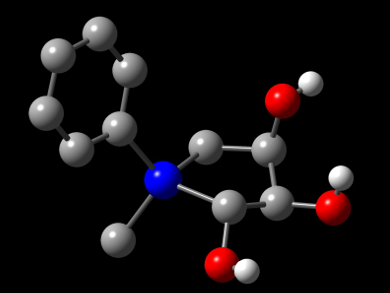Since the first report in 1907 that silicon centers can be chiral, many chemists have identified the potential utility of chiral silicon molecules in new classes of drugs, functional materials, and synthetic reagents. They have unique properties which are quite different from chiral carbon molecules. However, chiral silicon molecules do not occur naturally, and approaches for their asymmetric synthesis have been severely limited.
Katsuhiko Tomooka, Kazunobu Igawa, and colleagues, Kyushu University, Fukuoka, Japan, synthesized a variety of chiral silacyclopentanes, which contain chiral silicon centers. They achieved this by performing an enantioselective β-elimination on achiral silacyclopentene oxides. The high enantioselectivity was achieved by the use of a novel chiral lithium amide as the base, which was prepared from an L-alanine-derived diamine.
Additionally, the researchers found that an oxy-functionalized silacyclopentane shows substantial binding activity to the serotonin-receptor protein. Furthermore, the binding is highly dependent on the stereochemistry of the chiral silicon center.
- Enantioselective Synthesis of Silacyclopentanes,
Kazunobu Igawa, Daisuke Yoshihiro, Yusuke Abe, Katsuhiko Tomooka,
Angew. Chem. Int. Ed. 2016, 55, 5814–5818.
DOI: 10.1002/anie.201511728



